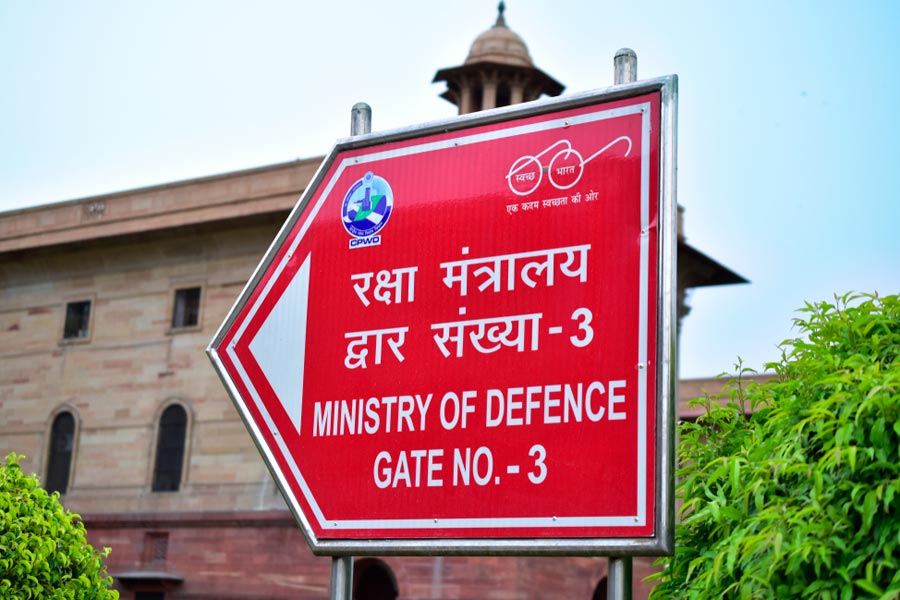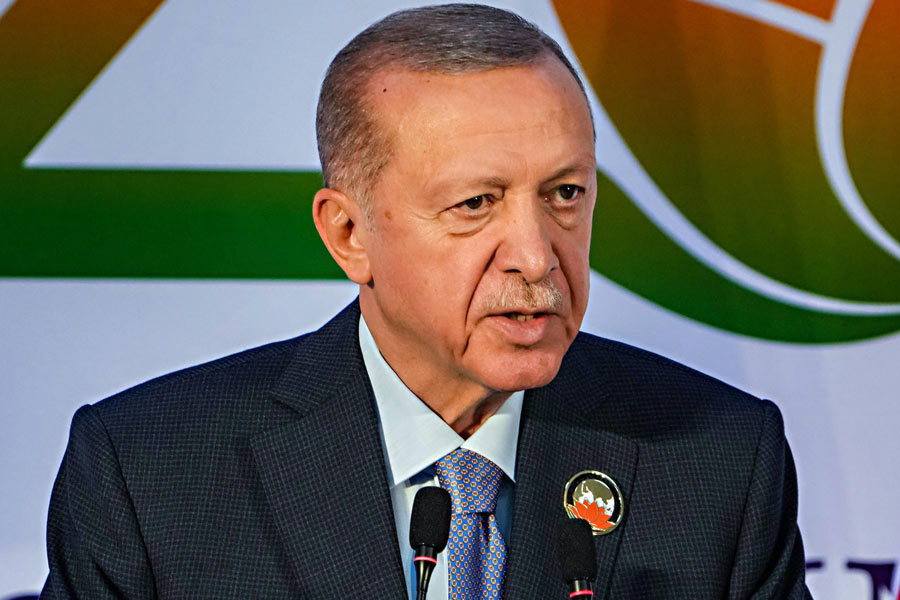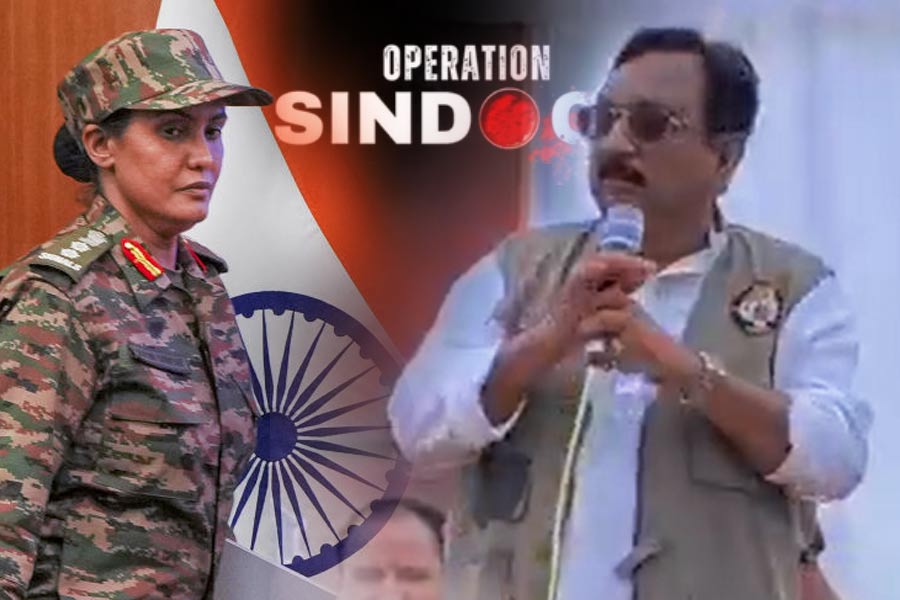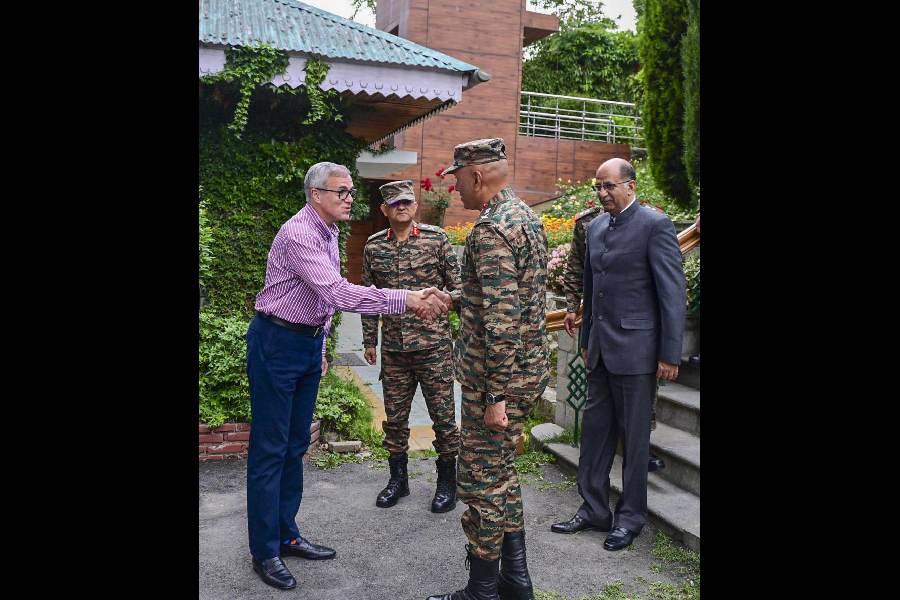|
|
The author is former director general military operations and currently director, Delhi Policy Group. He has first-hand knowledge of Iraq and its military system
In all wars there are distinct phases through which the outcome is reached. There is the opening phase of deployment for war and its opening assaults which often result in both adversaries learning to cope with the shock and surprise of what the opponent can do to them. This forces them to adjust plans to meet new situations that had not been anticipated. The second phase involves positioning the armies for the final battles. In the third and last phase, battles that decide the destiny of a war are fought to vanquish the enemy. The war in Iraq is in the second and decisive phase. It is not unlike the chess game with its opening, middle and end game phases.
The coalition forces were deployed against Iraq after covering great distances from the United States of America and the United Kingdom to west Asia. This was a major logistical and political undertaking. The moving of 350,000 troops, their war equipment and the logistic back-up is a massive undertaking. The US has perfected this art with its economic and transportation power. This had been achieved by mid-March, by which time the political management for the conduct of war had been taken up. The lining up of allies in the coalition, the United Nations security council resolution 1441, and the withdrawal of the second resolution authorizing war against Iraq had all been completed.
The opening phase saw the overwhelming power of coalition forces being applied against Iraq. The spectacular visual impact of the bombing and missile attacks in Baghdad will become part of the folklore of war in the decades to come. It was hoped that the “shock and awe” of this unprecedented attack would be enough to bring down the Iraqi dictator. It was hoped that the Iraqi population would turn against Saddam Hussein’s regime. It was hoped that coalition forces would be welcomed in Iraq as liberators and providers of freedom from a tyrannical regime.
These hopes were belied and coalition forces in fact met armed resistance everywhere. They suffered casualties and lost prisoners to the Iraqi forces. This has immediately brought forth warnings from President George W. Bush and Donald Rumsfeld that the war is going to be longer than expected. The only person who is silent is General Tommy Frank. He has to deliver victory to the Bush-Blair combine before costs of political economy take over. He must be under immense pressure from Bush-Rumsfeld-Dick Cheney-Colin Powell and the US chairman of chiefs of staff. No doubt he will tell his side of the story after retirement in a book.
Saddam Hussein, with his inferiority in numbers and armament inventory, has little or no hope of stopping the invasion. He has wisely husbanded his forces by deciding to fight for the control of his major cities. Iraq is a desert land where cities form the main population centres. He has prepared plans to use his best military elements and his party soldiers to fight the coalition forces where he is strongest. The cities of Basra, Nasiriyah, Najf, Karbala and finally Baghdad are to be used as fortresses. Coalition forces will have to attack them and bear the costs in casualties and damage to innocent civilians and international criticism. Hussein hopes that by this method of fighting, he would impose costs and delay on the coalition forces. He expects that an upset timetable, high domestic political costs and increased international pressure would force the Bush-Blair combine to seek early termination of the war.
The war has now entered the second phase where both sides have taken stock of the ground situation. Coalition forces are taking measures to conduct future operations on wider fronts instead of advancing on single roads in long snaking tank and vehicle columns. The ambushes they have encountered have forced them to take additional precautions against sneak attacks and raids by the Iraqis. This has slowed down the race to Baghdad and forced the coalition to invest heavily in forces to surround and isolate towns like Basra and Nasiriyah. They have been forced to declare Basra as a military objective. This is significant since it implies that the city which has not risen against Saddam Hussein, is now threatened with military attacks. That means there would be civilian casualties in the process of pacifying the city.
The second phase will see the coalition forces closing in on Baghdad and cutting off its supplies. In many ways it is the modern variant of fortress warfare where the defenders hunker down to a long siege and the attacker lays waste to the countryside. A major metropolis like Baghdad depends largely on supplies coming in from outside the city. The denial of sustenance to the city and its rulers will put immense pressures on the Iraqi regime. Whether it capitulates in the face of such travails would depend on availability of stocks that may have been built up and the resilience of the city’s population.
The coalition is also going to be under pressure for an early conclusion of war. Delay in occupying Baghdad is going to be fraught with serious consequences for the coalition. Military operations are going to become increasingly difficult in the coming summer months. The political consequences to the Bush-Blair team of a prolonged war are unlikely to be any less either.
The military strategy of Iraq and the coalition is being put into place in the second phase. Iraq would want to delay the occupation of Baghdad long enough to force the coalition to think of terminating the war, before its costs become counterproductive to its political and economic aims. The US and UK would want to speed up military operations to gain possession of Baghdad in order to force a regime change in Iraq. These irreconcilable and opposite strategies will dominate the war scene in the coming two weeks. Which strategy will prevail remains to be seen.
The coalition is pouring troops into the Northern zone controlled by the Kurds to open a new front against Baghdad. They have pressurized Turkey into not rocking the boat by sending its army into northern Iraq. A paratrooper attack is a rare thing in modern war. Its use shows the total control of air space by coalition air power and a great deal of ground support, intelligence and public cooperation from Kurd-held areas. The air drop has been used to leapfrog over Turkish territory and get a foothold in northern Iraq. The air build-up of a division in the area with its tanks, guns, fuel and ammunition is a major effort. It will take at least one week, if not more.
The siege of Baghdad will begin once coalition forces approach it from all directions and cut off escape routes for Hussein and his political and military commanders. It remains to be seen if Saddam fights to the end or makes way. On the other hand, if he can delay the fall of Baghdad and force the coalition to fight for its possession, Bush would come under pressure for war termination. Bush faces, in September, the primaries for the next presidential elections. He must therefore produce a victory or terminate the war with some gains which can be sold to the US public as victory.
In the interim, moves are afoot to find ways to terminate the war. Arab nations have taken the stand that the war must be ended immediately. Even countries which are part of the coalition against Iraq have joined this move. The only exception is Kuwait whose interest in getting rid of Hussein is understandable. The European nations, Asian and other groups will before long join the demand for war termination.
It is possible that Saddam Hussein may come up with proposals which meet the US-led demand for elimination of weapons of mass destruction from Iraq. In all this, there is the wild card of Saddam Hussein being removed from the scene through an internal power struggle, an outcome the coalition forces and the Bush-Blair duo would fervently hope emerges.












